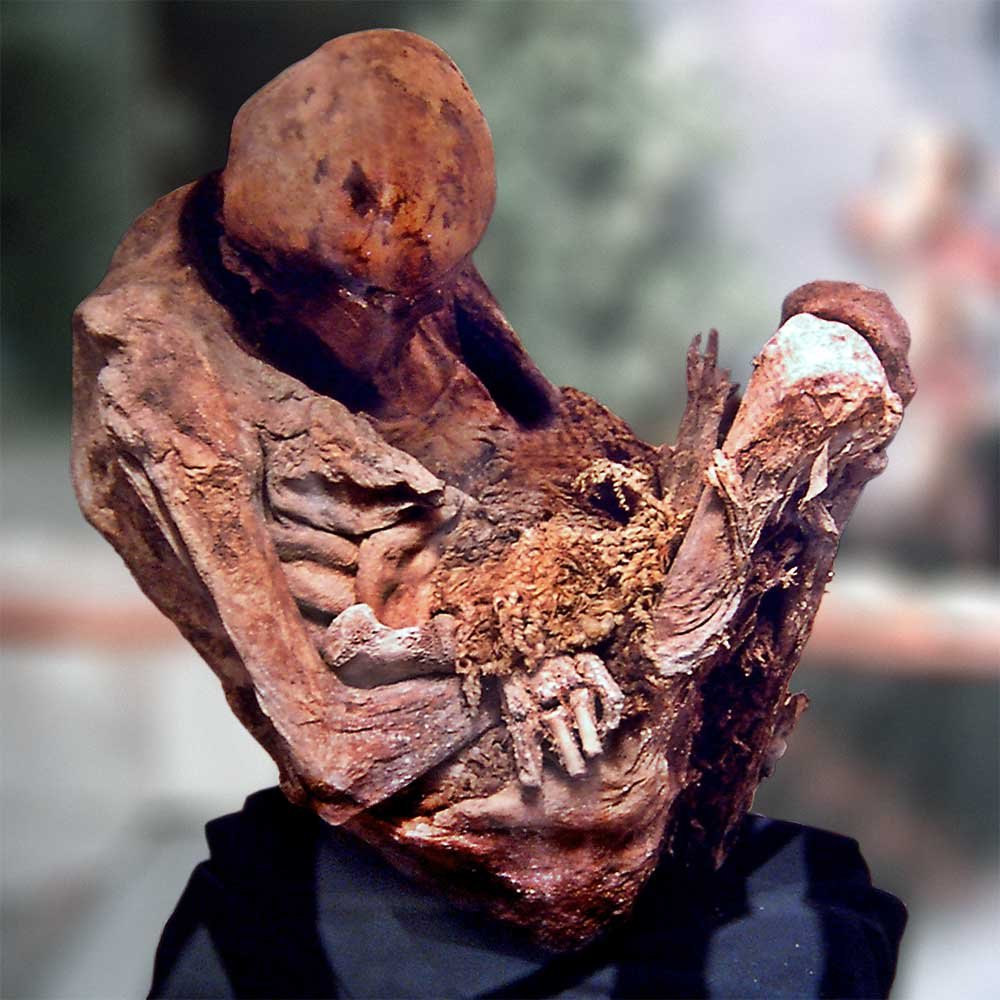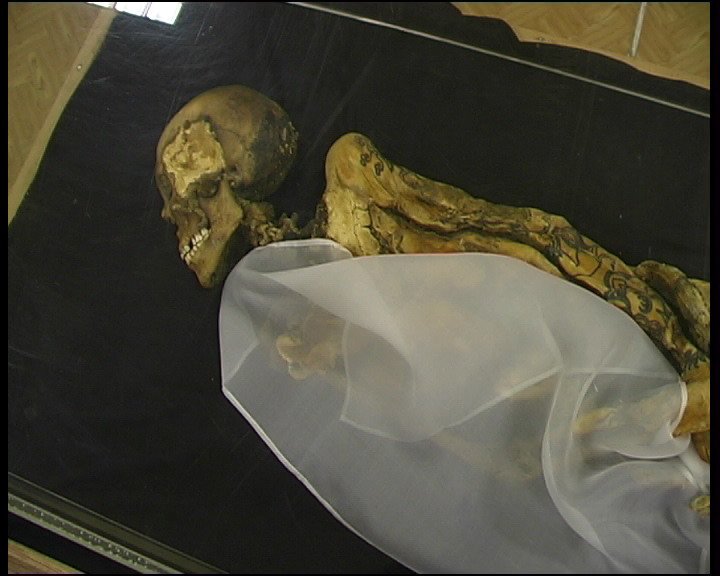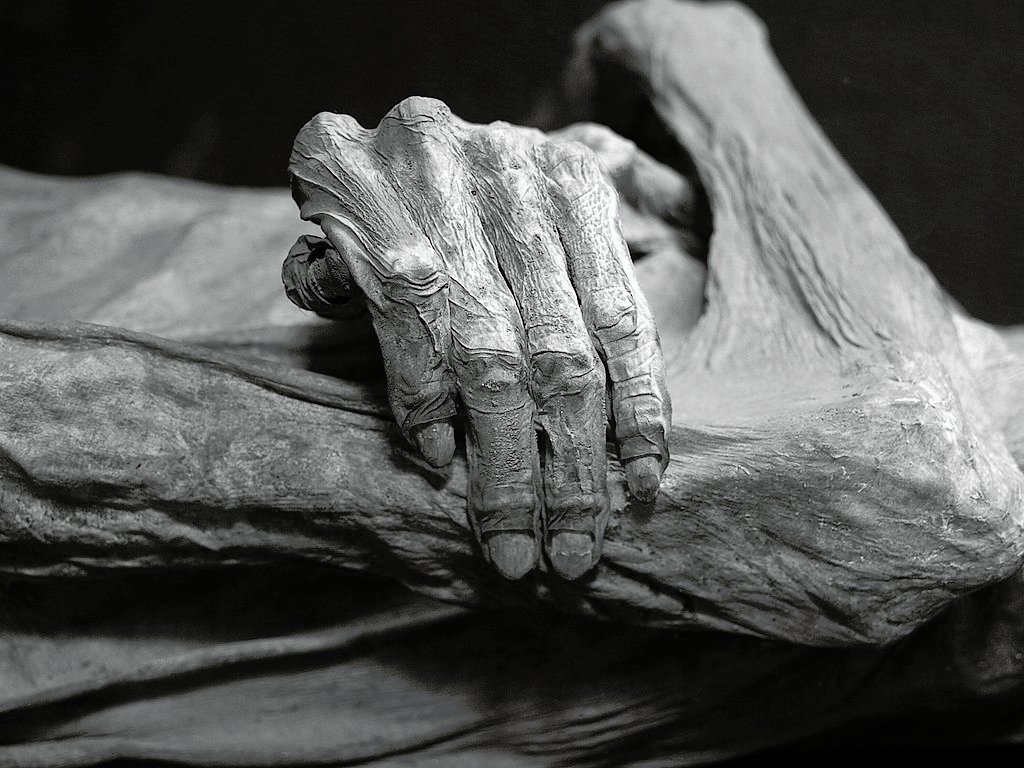For nearly a century, an enigmatic mummy sat quietly in the collections of the University of Turin’s Museum of Anthropology and Ethnography (MAET), her secrets locked beneath darkened skin. Donated before 1930 with no archaeological records, her origins were a mystery until now. A recent study has revealed something extraordinary: a series of rare facial tattoos, their ink composed of an unexpected mineral, challenging long-held assumptions about ancient body art in South America. The findings, published in the Journal of Cultural Heritage, suggest this 800-year-old woman may hold clues to forgotten cultural practices, raising tantalizing questions about identity, ritual, and the movement of people across the pre-Columbian world.
A Mummy Without a Past

The mummy’s journey to the museum is as cryptic as her tattoos. Arriving with only a vague label linking her to South America, she was long overlooked until researchers noticed faint markings on her cheeks and wrist. Unlike the elaborate geometric tattoos commonly found on Andean mummies, hers were strikingly minimalist: three straight lines on her right cheek, one on the left, and a solitary S-shape on her wrist. Radiocarbon dating of textile fragments clinging to her body placed her death between 1215 and 1382 CE, a time when the Inca Empire was still rising to power.
Her seated, flexed posture typical of Andean fardo burials initially suggested Peruvian origins. Yet, as lead researcher Gianluigi Mangiapane notes, “The tattoos defy expectations. Cheek markings are virtually unseen in Andean mummies, and the wrist design is unlike anything documented before”.
The Ink That Defies Tradition

When scientists analyzed the tattoos’ pigment, they anticipated charcoal as the go-to ink for ancient body art worldwide. Instead, they found magnetite, an iron oxide mineral, mixed with traces of pyroxene, a silicate. This combination, sourced from southern Peru’s mineral-rich soils, is unprecedented in South American mummy studies. “The intentional absence of charcoal is baffling,” the team wrote. “This wasn’t just a practical choice, it may signify a deliberate cultural or ritual decision”.
Aaron Deter-Wolf, an expert in ancient tattooing, points out that while magnetite was occasionally used elsewhere in the Americas, its application here is unique. “The mineral’s metallic sheen might have held symbolic meaning, perhaps linked to spiritual concepts or status,” he speculates.
A Face That Challenges Geography
The tattoos’ placement and style have sparked debate. Deter-Wolf argues they resemble Arctic or Amazonian traditions more than Andean ones, hinting at possible long-distance connections or even a misattributed origin. “If she’s not from the Andes, how did she get there? Trade? Migration? Captivity?” he muses .
However, without isotopic analysis of her bones or teeth a process deemed too invasive for now her homeland remains uncertain. Mangiapane’s team leans toward Peru due to the fardo wrapping and textile evidence, but the mystery endures.
The Silent Language of Skin

Why tattoo the cheeks? In cultures where facial markings exist, they often signal identity: clan affiliation, marital status, or spiritual protection. The simplicity of this mummy’s designs suggests a personal or localized tradition rather than a widespread practice. “These weren’t hidden symbols,” says Mangiapane. “They were meant to be seen as a permanent statement to the living and the dead”.
The wrist’s S-shape, meanwhile, lacks parallels in the archaeological record. Could it represent a family crest, a deity’s symbol, or even a maker’s mark from the tattooist? Without comparative examples, researchers can only guess.
A Window into Lost Worlds

The tattoos on this mummy highlight our still ignorance of pre- Columbian civilizations. Most surviving tattooed mummies come from the arid coasts of Peru, where dry conditions help to preserve skin. However, as this case demonstrates, exceptions hide in museum basements just waiting for technology or curiosity to tell their stories.
The MAET plans further studies, including non-invasive imaging and cultural comparisons. “Every detail, the ink, the placement, the posture is a puzzle piece,” says Mangiapane. “She’s rewriting what we thought we knew” .
Conclusion: A Mystery That Endures

Right now, the mummy’s message stays buried in her iron-laced tattoos. Was she a healer, a visitor, or someone defined by a rite we still do not know about? One thing is abundantly evident as researchers dig further: her skin speaks a language we are only starting to understand, one that subverts conventional art and identity.
Sources:

Jan loves Wildlife and Animals and is one of the founders of Animals Around The Globe. He holds an MSc in Finance & Economics and is a passionate PADI Open Water Diver. His favorite animals are Mountain Gorillas, Tigers, and Great White Sharks. He lived in South Africa, Germany, the USA, Ireland, Italy, China, and Australia. Before AATG, Jan worked for Google, Axel Springer, BMW and others.




